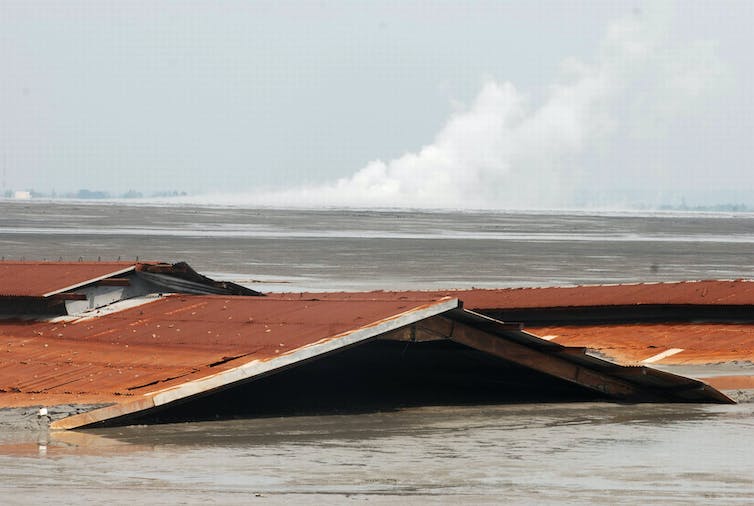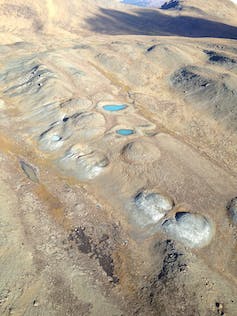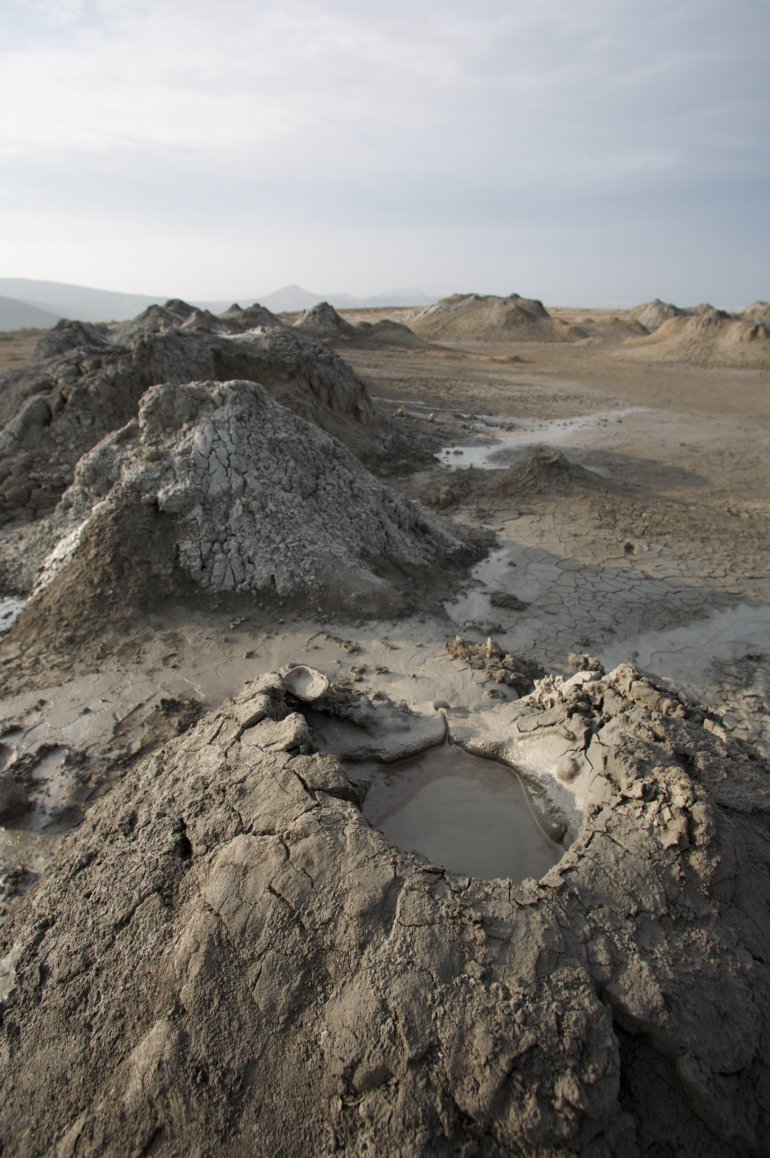Rice farmers living in Sidoarjo Regency, Indonesia, awoke to a strange sight on May 29, 2006. The ground had ruptured overnight and was spewing out steam.
In the following weeks, water, boiling-hot mud and natural gas were added to the mixture. When the eruption intensified, mud started to spread over the fields. Alarmed residents evacuated, hoping to wait out the eruption safely.

The mud onslaught forced tens of thousands of people to relocate from their homes.
Mochammad Risyal Hidayat/AFP via Getty Images
Except that it didn’t stop. Weeks passed, and the spreading mud engulfed entire villages. In a frantic race against time, the Indonesian government began to build levees to contain the mud and stop the spread. When the mud overtopped these levees, they built new ones behind the first set. The government eventually succeeded in stopping the mud’s advance, but not before the flows had wiped out a dozen villages and forced 60,000 people to relocate.
Why would the Earth suddenly start vomiting forth huge quantities of mud like this?
Introducing mud volcanoes
The Lusi structure – a contraction of Lumpur Sidoarjo, meaning “Sidoarjo mud” – is an example of a geological feature known as a mud volcano. They form when a combination of mud, fluids and gases erupt at the Earth’s surface. The term “volcano” is borrowed from the much better known world of igneous volcanoes, where molten rock comes to the surface. I’ve been studying these fascinating structures on subsurface seismic data for the past five years, but nothing compares to seeing one actively erupting.
For mud volcanoes, in many cases the mud bubbles up to the surface rather quietly. But sometimes the eruptions are quite violent. Furthermore, most of the gas coming out of a mud volcano is methane, which is highly flammable. This gas can ignite, creating spectacular fiery eruptions.
Gases erupting along with mud can ignite.
Mud volcanoes are little known in North America, but much more common in other parts of the world, including not only Indonesia but also Azerbaijan, Trinidad, Italy and Japan.
They form when fluids and gases that have built up under pressure inside the Earth find an escape route to the surface via a network of fractures. The fluids move up these cracks, carrying mud with them, creating the mud volcano as they escape.
The idea is similar to a car tire containing compressed air. As long as the tire is intact, the air stays safely inside. Once the air has a pathway out, however, it begins to escape. Sometimes the air escapes as a slow leak – in other cases there is a blowout.

A series of mud volcanoes on the Nahlin Plateau, British Columbia.
Hkeyser/Wikimedia Commons, CC BY-SA
Overpressure within the Earth builds up when underground fluids are unable to escape from beneath the weight of…



